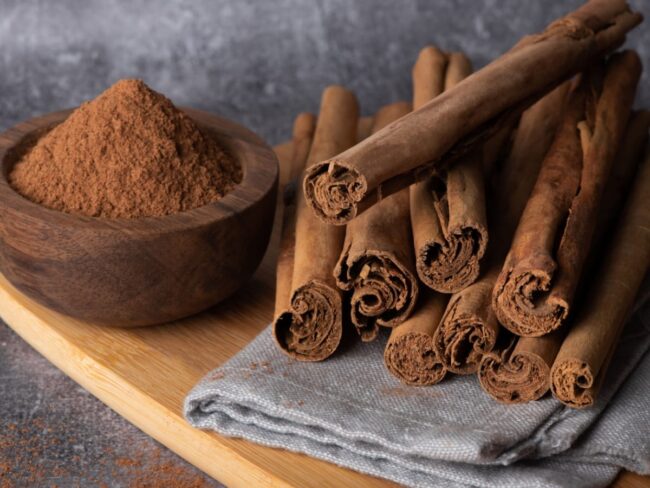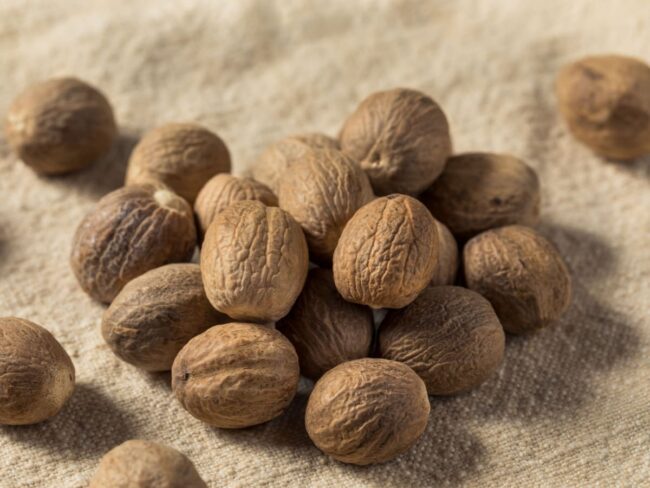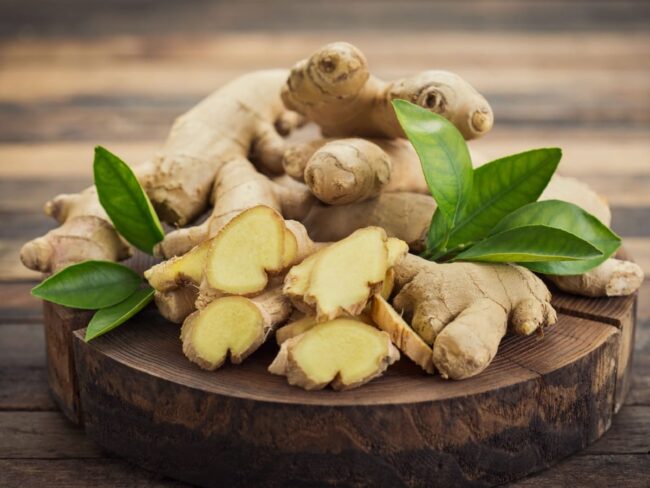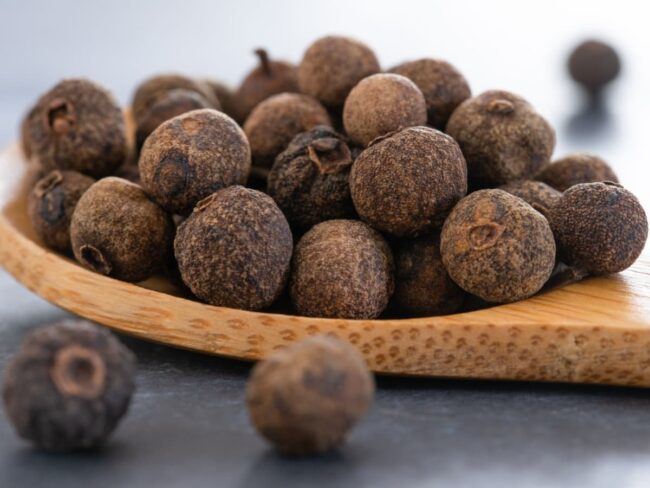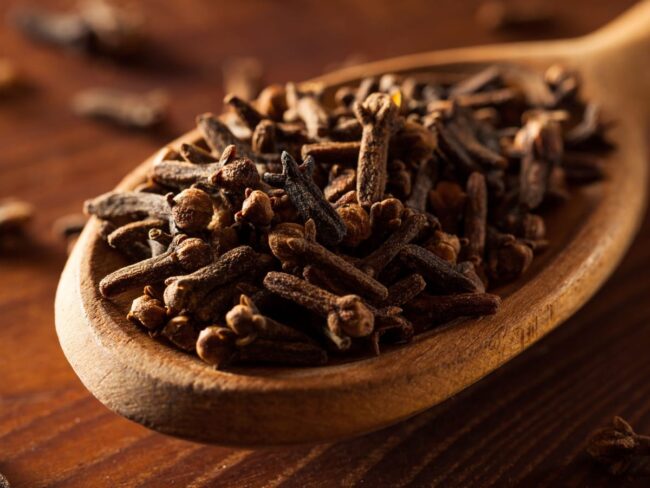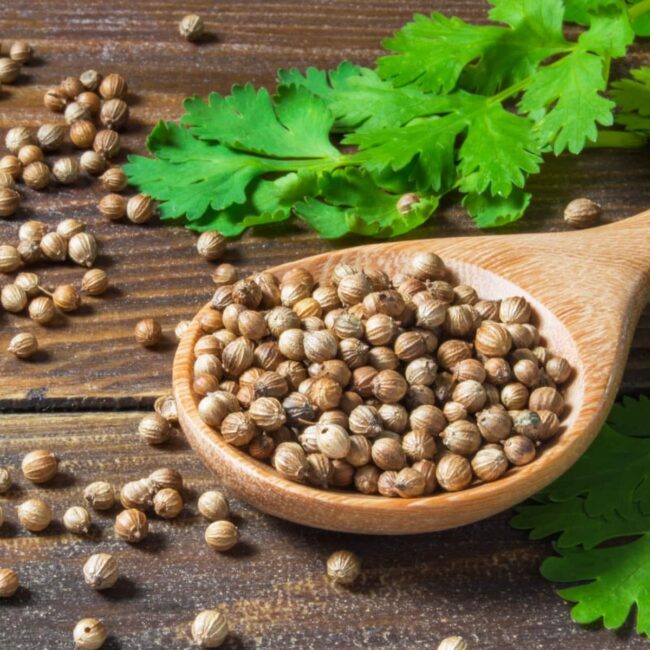7 Flavor-Packed Alternatives to Use Instead of Cardamom
Cardamom substitutes enhance the complexity of dishes when the signature spice is unavailable. Their flavors range from sweet to aromatic, offering options for diverse recipes.
These alternatives adapt well to savory meals or sweet treats. Some can replicate the warmth of cardamom, while others bring a fresh twist to your cooking.
They allow you to maintain balance without compromising authenticity. Here are 7 substitutes to elevate your dishes:
Different Kinds of Cardamom
Cardamom is a popular spice known for its unique flavor and aroma. In this section, we'll explore the different kinds of cardamom and how each type can be used in cooking and baking.
Green Cardamom
Green cardamom is a fragrant spice revered for its sweet and floral notes, making it an essential ingredient in many culinary traditions.
Known scientifically as Elettaria cardamomum, this variety often comes in pods that house tiny black seeds packed with robust flavor.
You can use these seeds whole or ground to enhance both sweet delights like cookies and pastries as well as savory meals such as curries or meat rubs.
This spice also adds depth to beverages, enriching teas and coffees with its distinctive aroma.
Black Cardamom
Black cardamom is known for robust, smoky flavor that sets it apart from other varieties. With its larger size and dark, rough pods filled with sizable seeds, this aromatic ingredient adds depth to various dishes.
Often utilized in rice recipes such as biryani and pulao, black cardamom elevates the overall taste profile of these meals effortlessly. It also finds a home in masala chai where it complements the rich blend of spices beautifully.
For those who enjoy heartier fare, incorporating this spice into meat stews or roasts imparts an irresistible warmth that's hard to resist during cooking sessions.
White Cardamom
White cardamom is a milder variant of the spice, created by bleaching green cardamom to achieve its pale hue.
This process often leads to a softer flavor profile, making it less aromatic compared to the robust green variety.
While not as widely used as other types, white cardamom finds its niche in light-colored dishes such as rice pudding and various coconut-based recipes where subtlety matters.
It also enhances desserts and baked goods without overpowering their delicate sweetness.
How Cardamom Is Used in Cooking
Cardamom is a fragrant spice that adds unique flavor to many dishes. In this section, we'll explore the different ways cardamom can be used in cooking to enhance your meals.
Indian Cuisine
Indian cuisine is a tapestry of flavors, where cardamom plays a pivotal role in enhancing both savory and sweet creations. This aromatic spice elevates dishes such as biryanis and curries with its unique fragrance while adding warmth to traditional chai, a cherished spiced tea.
When indulging in Indian sweets like kheer or kulfi, you’ll discover how this spice brings depth and allure to every bite. In culinary practice, green cardamom lends delicate sweetness perfect for desserts, whereas black cardamom delivers robust smokiness ideal for hearty meals.
With these 2 varieties at play, the versatility of cardamom becomes evident throughout India's rich food landscape.
Middle Eastern Cuisine
Middle Eastern cuisine embraces cardamom as a key flavor enhancer, known for its aromatic and slightly sweet profile. This versatile spice elevates an array of dishes, from fragrant rice to savory meats and delightful desserts.
Its presence is crucial in the beloved spice blend baharat, which harmonizes cardamom with other spices like cinnamon and cumin to create rich flavors. Traditional sweets such as mamoul or baklava come alive with the addition of this exotic ingredient, while Arabic coffee gains depth through its infusion.
Cardamom's unique character not only complements various recipes but also enriches cultural dining experiences across Middle Eastern tables.
7 Amazing Substitutes for Cardamom to Elevate Your Recipes
Explore 7 brilliant cardamom substitutes to keep your dishes flavorful and aromatic. Perfect for those times when you’re out of this exotic spice.
Cinnamon
Cinnamon is a fantastic alternative to cardamom, bringing its own unique warmth and sweetness. This commonly found spice enhances the flavor of baked goods and desserts with ease.
Although it has a distinct taste profile compared to cardamom, cinnamon’s aromatic qualities make it an excellent choice in recipes that call for the latter. You’ll find that just a sprinkle can transform your dish beautifully, providing depth without overpowering other ingredients.
With its availability and versatility, using cinnamon allows you to maintain rich flavors even when you're short on cardamom.
Nutmeg
Nutmeg serves as an excellent alternative to cardamom, imparting a cozy and fragrant essence to various dishes. While its flavor profile differs from cardamom's unique spice blend, it enhances baked goods and hot drinks beautifully when used sparingly.
You might find nutmeg particularly effective in desserts like cakes or spiced lattes, where warmth is key. This versatile ingredient not only adds depth but also elevates the overall taste experience of your culinary creations with its subtle sweetness.
Consider integrating nutmeg into your favorite recipes for a comforting twist that intrigues the palate without overwhelming it.
Ginger
Ginger serves as an excellent alternative to cardamom, offering a warm and slightly sweet flavor that brightens up various dishes.
Whether used fresh or in ground form, ginger's zesty notes seamlessly enhance savory meals and desserts alike.
Its spiciness adds depth to recipes where cardamom might typically shine, making it a versatile choice for those looking to switch things up in the kitchen.
I often reach for ginger when experimenting with flavors, as its unique profile can transform everyday ingredients into something special without overpowering them.
Allspice
Allspice stands out as an excellent alternative to cardamom due to its distinctive flavor profile, reminiscent of a blend of cinnamon, cloves, and nutmeg. This spice brings warmth and sweetness that can easily enhance both savory dishes and desserts.
When you use allspice in place of cardamom, it adds aromatic depth while maintaining the overall essence of your dish. With its versatile nature, allspice can seamlessly fit into various recipes where cardamom is traditionally used.
Discovering this substitute opens up new culinary possibilities without compromising on taste or fragrance.
Cloves
Cloves serve as a potent alternative to cardamom, renowned for their intense aroma and sweet taste. Their rich flavor can enhance both desserts and savory meals when used judiciously.
Ground cloves seamlessly integrate into baked goods, adding depth without overwhelming other ingredients. Whole cloves shine in savory dishes, imparting warmth and complexity while allowing you to control the intensity of their presence.
Incorporating these spices effectively brings a unique character to your culinary creations that complements various recipes beautifully.
Cardamom Seeds
Cardamom seeds serve as a fantastic alternative when looking to replace ground cardamom. These aromatic seeds, found inside whole pods, maintain the spice’s distinctive flavor profile remarkably well.
For optimal results, crushing them with a mortar and pestle or using a spice grinder can release their essential oils and enhance your dishes' taste. Incorporating these freshly ground seeds into recipes offers an authentic touch that elevates both sweet and savory meals alike.
With this substitution at hand, you can effortlessly infuse your cooking with the unique essence of cardamom without any hassle.
Coriander Seeds
Coriander seeds are an excellent alternative to cardamom, boasting a warm and citrusy flavor profile that adds depth to various dishes.
Their slightly earthy notes make them particularly suitable for savory recipes, enhancing the taste of spice blends like curries and masalas.
When you need a substitute in your cooking, ground coriander seeds can seamlessly replace ground cardamom in many culinary creations.
This ingredient not only brings its own character but also complements other spices beautifully, making it a smart choice for elevating your meals with rich flavors.
How to Swap Cardamom in Recipes
Cardamom is a unique spice that adds a special flavor to many dishes. If you don't have it on hand, here are some simple tips for swapping cardamom in your recipes!
Baked Goods
Using substitutes in baked goods opens up a world of flavor possibilities. Cardamom adds a unique taste, but when it's unavailable, cinnamon paired with nutmeg or ginger provides an excellent alternative.
These spices impart a cozy sweetness that complements many dessert creations. You might find this combination elevates your favorite recipes while keeping the essence intact.
Exploring different spice pairings can lead to delightful surprises in your baking adventures as you adapt to what’s on hand without compromising quality.
Savory Dishes
Using substitutes in savory dishes opens up a world of flavor possibilities. Cardamom finds its match with a mix of spices, bringing warmth and depth to your meals.
For those seeking citrusy or sweet notes, blending coriander and cumin offers an exciting twist that enhances the overall taste profile. When preparing meats or rice, incorporating cloves and allspice adds aromatic complexity that elevates each bite.
These alternatives not only maintain the essence of traditional recipes but also invite creativity into everyday cooking experiences.
Tea and Beverages
Switching ingredients can add a fun twist to your cooking. If you're out of cardamom, here are some simple substitutes to try in drinks and recipes:
Trying new spice blends not only keeps your dishes flavorful but also helps you get creative when certain ingredients aren’t available or preferred.
Tips for Using Cardamom Replacements
Cardamom is a unique spice that adds special flavor to many dishes, but sometimes you might not have it on hand. Here are some helpful tips for finding and using replacements so you can still enjoy your recipes!
Teaspoon Measurements
Below are effective alternatives and their ideal measurements to replace one teaspoon of cardamom:
Feel free to tweak these amounts according to your preferences or the dish you’re creating. Balancing flavors is key in achieving delicious results!
Grind or Powder Form
Understanding how to use substitutes for cardamom can elevate your cooking experience. Here are some key points to consider when working with alternatives in ground or powdered forms:
Utilizing these strategies allows you to seamlessly incorporate substitutes into your dishes, enhancing them without compromising on taste.
Spices That Go Well with Cardamom
Cardamom is a unique spice that adds a special flavor to many dishes. In this section, we will explore other spices that pair perfectly with cardamom to enhance your cooking.
Garam Masala
Exploring spice blends that feature cardamom opens up a world of flavor. Garam masala stands out as one such blend, known for its warm and aromatic qualities:
When fresh cardamom isn’t available, garam masala can easily replace it in many recipes. Remember that while similarities exist in warmth and sweetness, the additional spices will shift the final flavor slightly.
Apple Pie Spice
Exploring spice blends that feature cardamom can enhance your culinary creations. Here’s a look at apple pie spice and its delightful qualities:
Using apple pie spice as a substitute for cardamom allows you to achieve subtle warmth without overwhelming the dish. Adjust amounts according to your taste preferences.
Chai Tea Blend
Exploring the world of spice blends reveals how versatile cardamom can be, especially in aromatic combinations. The chai tea blend stands out as a favorite that highlights this unique spice. Chai tea blend consists of:
When looking for alternatives to cardamom, consider using this blend carefully in savory dishes due to its bold taste.
Things to Think About When Picking a Substitute
Finding the right alternative for cardamom can enhance your dish while maintaining its intended flavor. Here are some crucial points to keep in mind during your selection process:




